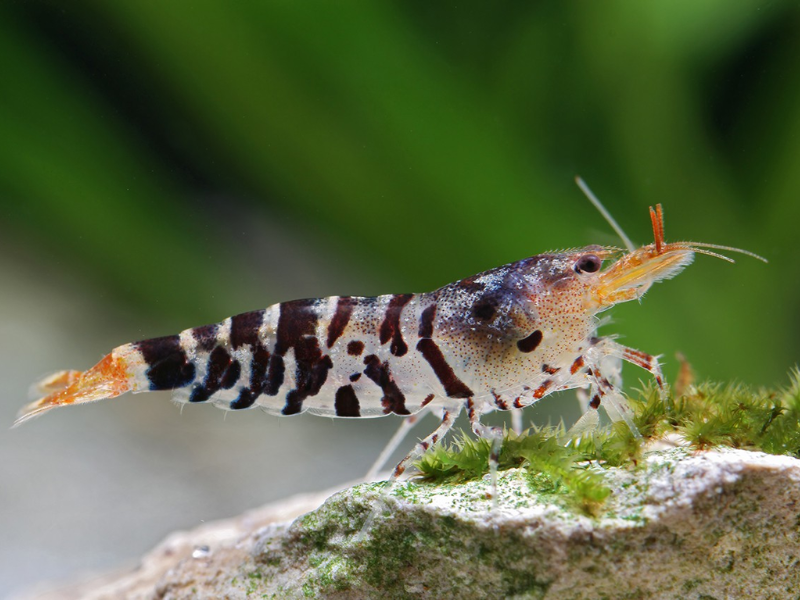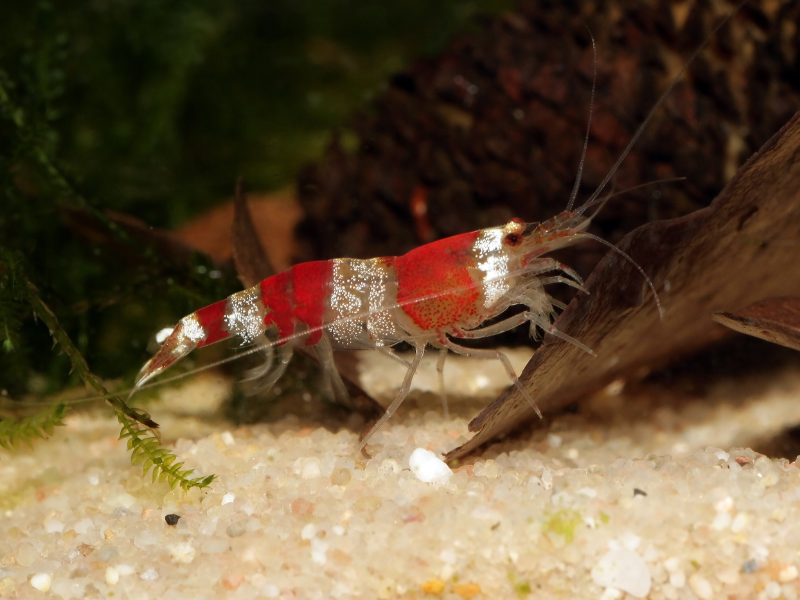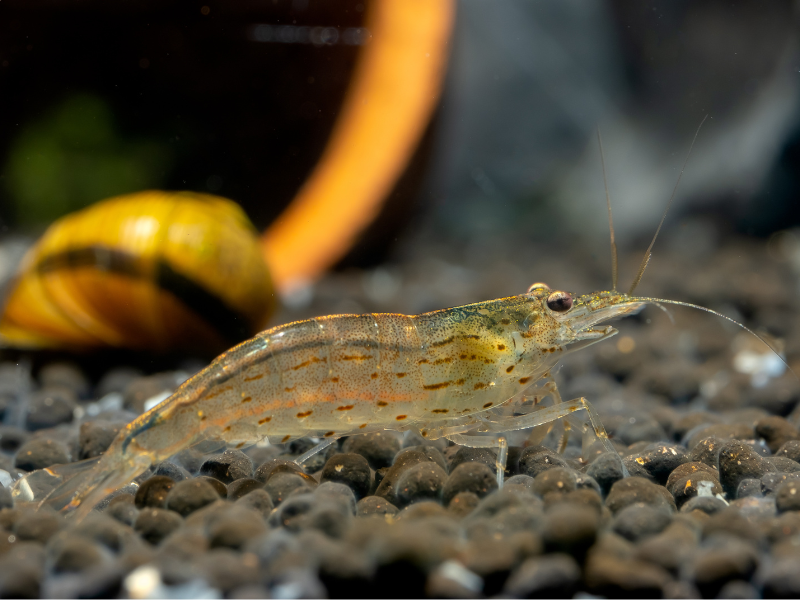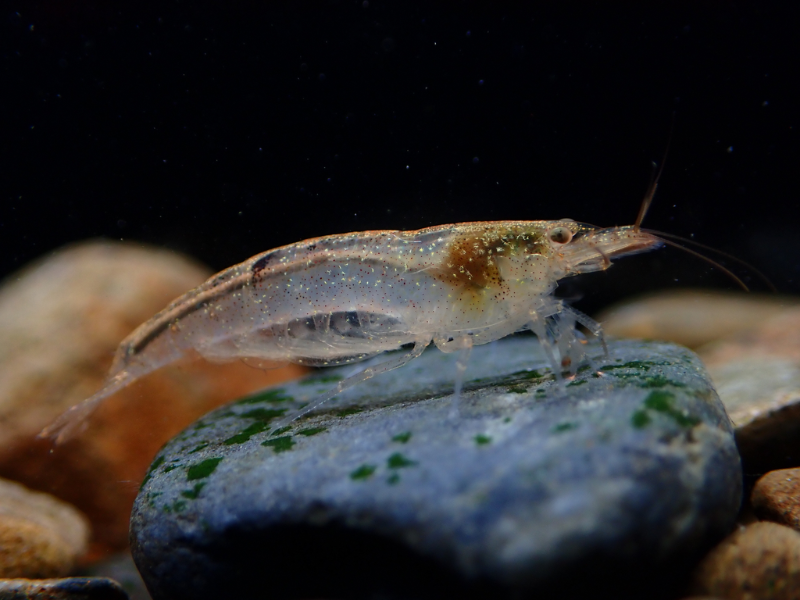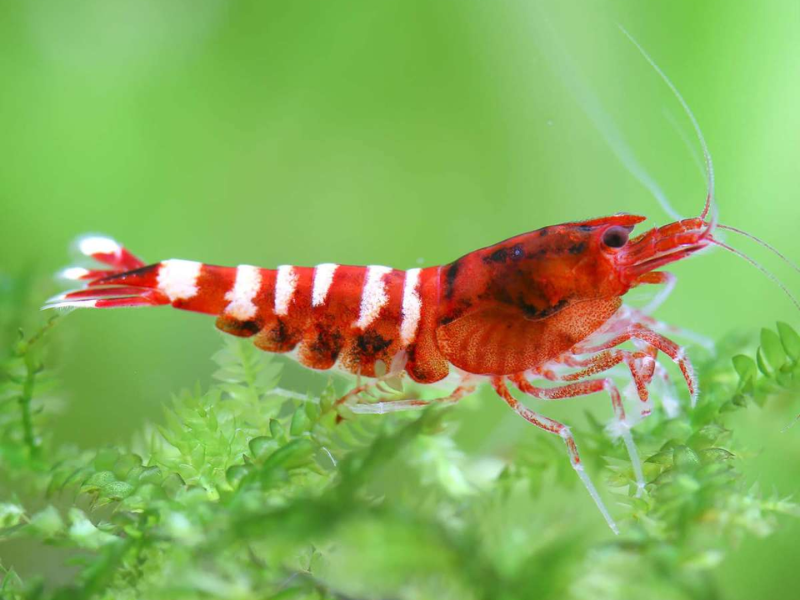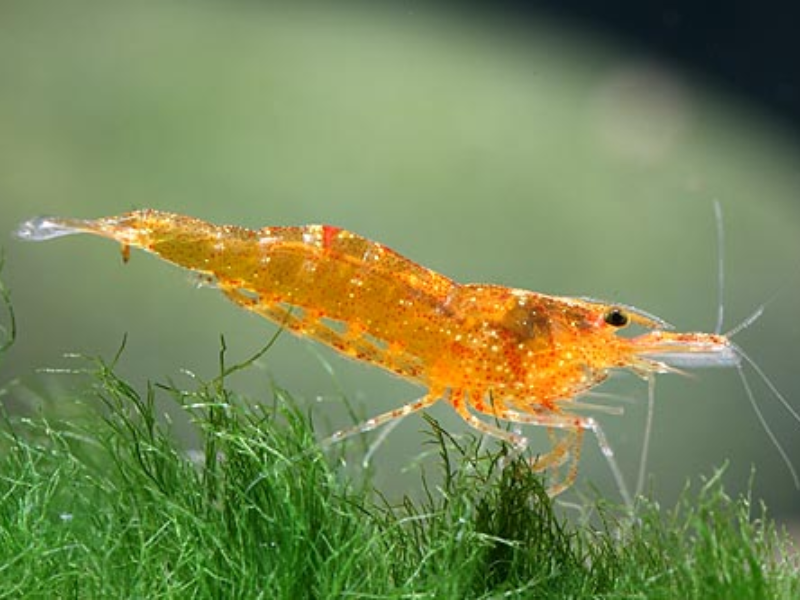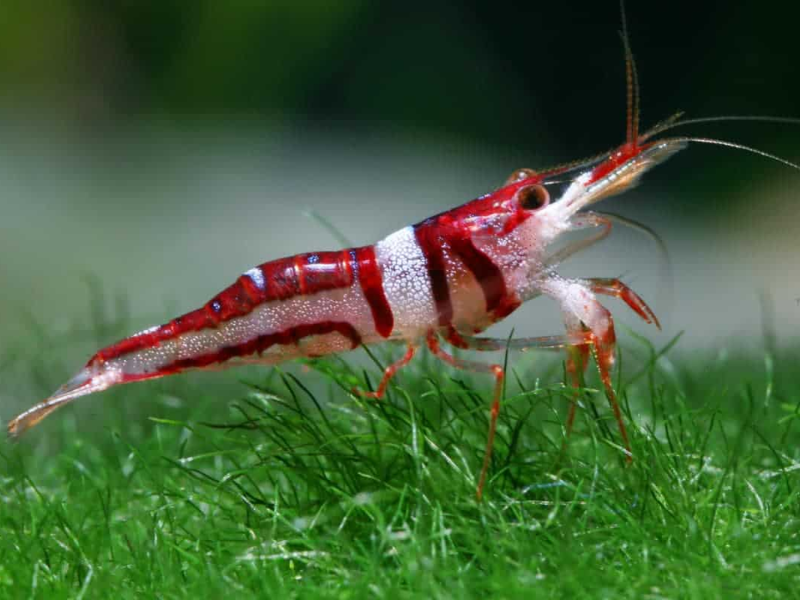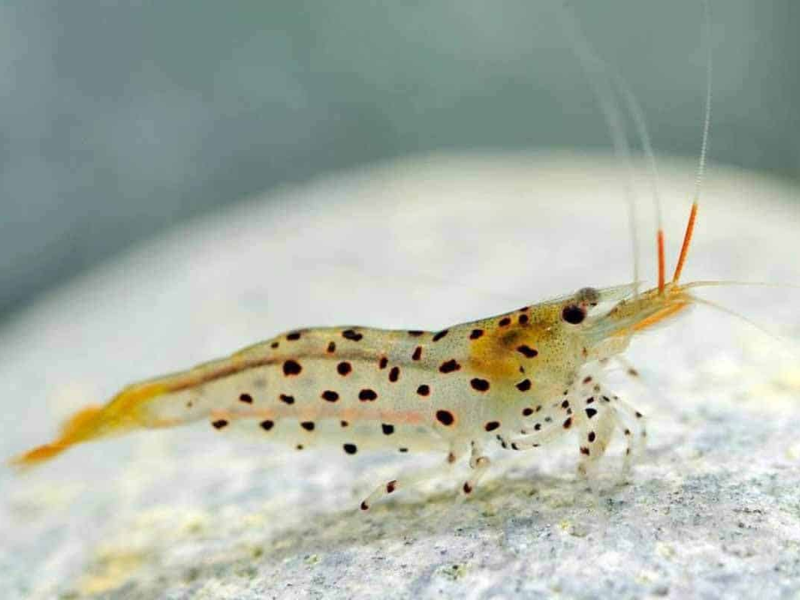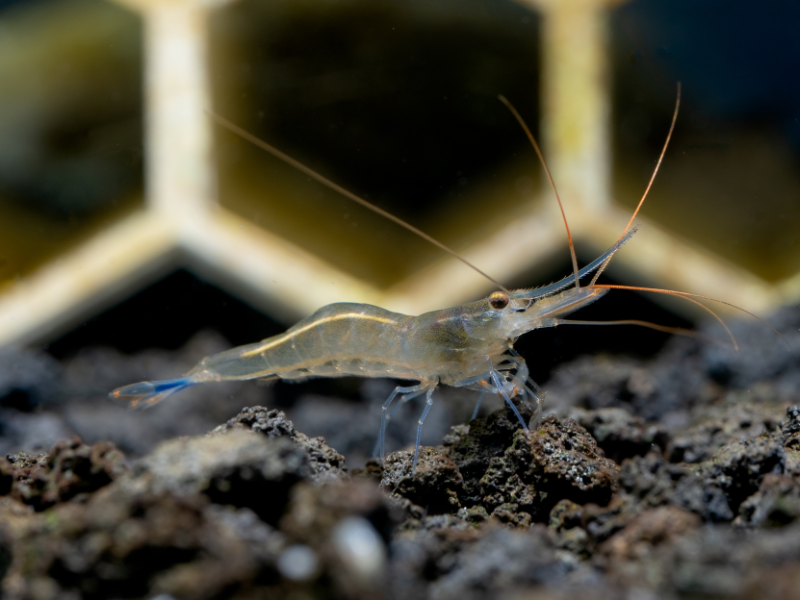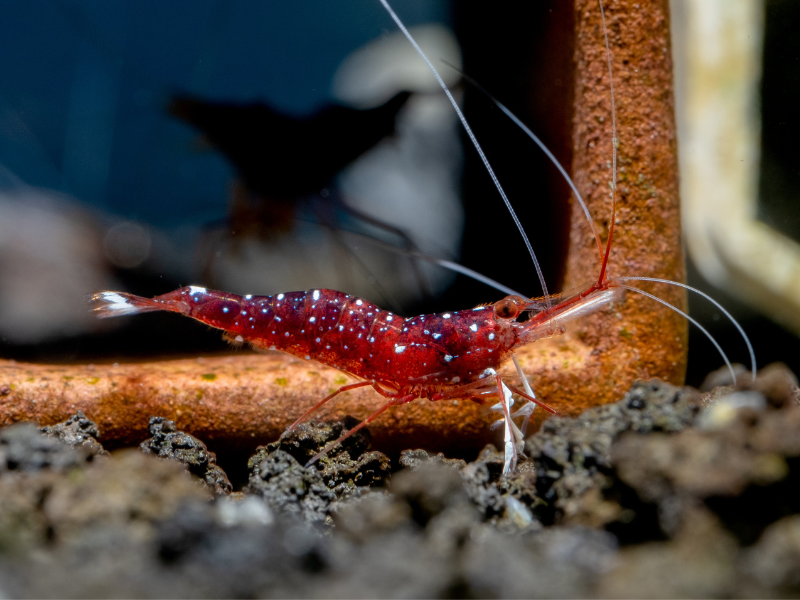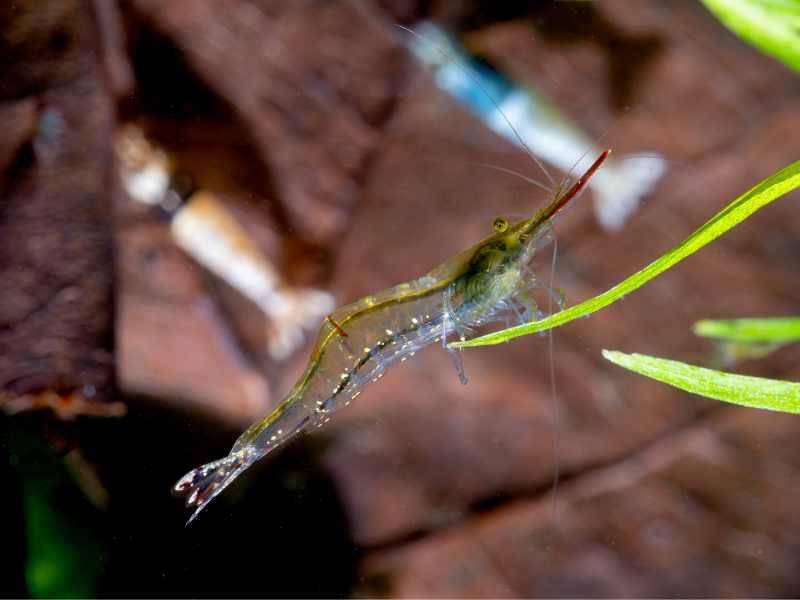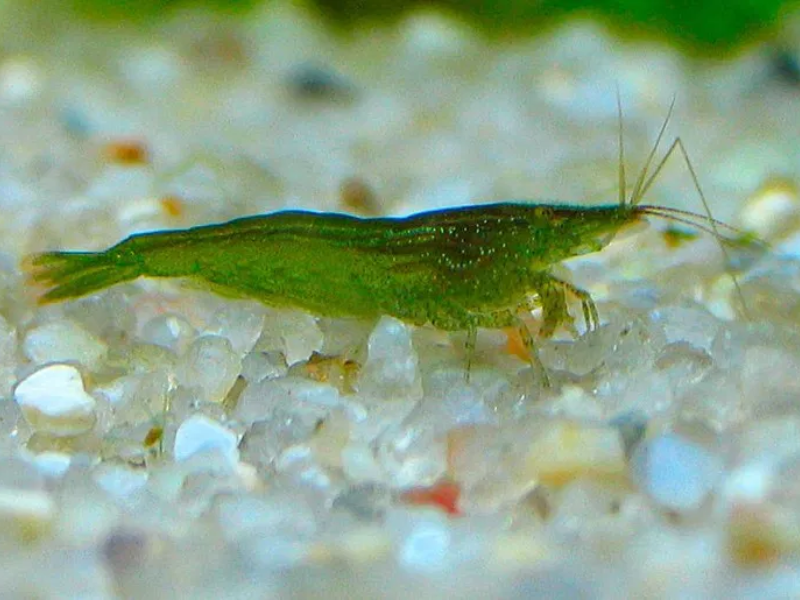Caridina serrata
Serrated Shrimp
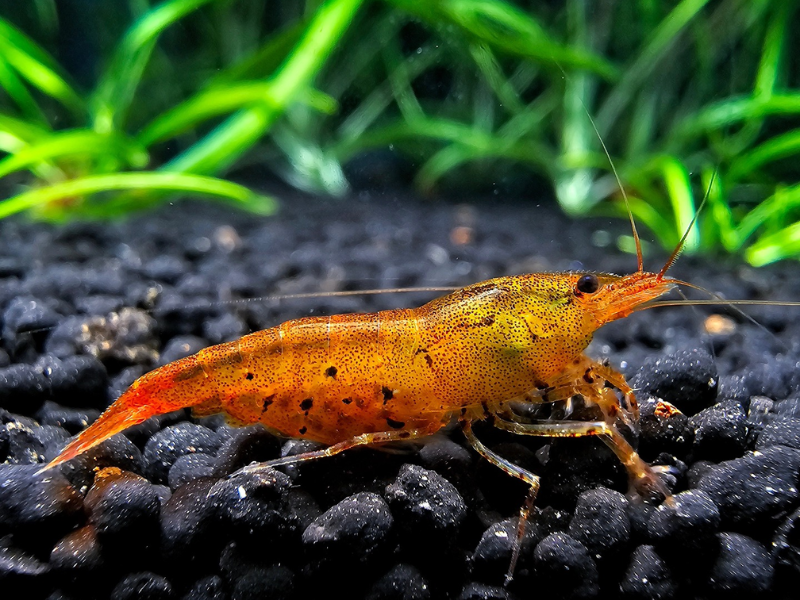
Scientific Classification
Quick Stats
Aquarium Building Information
About This Species
Basic Description
Detailed Description
Caridina serrata, commonly known as the Serrated Shrimp, is a captivating invertebrate that brings activity and utility to a mature freshwater aquarium. Originating from streams in Asia, these shrimp are adapted to clean, well-oxygenated water with a low to moderate current. Replicating this environment is key to their long-term health. They are fundamentally social creatures that exhibit shoaling behavior, and keeping them in a group is essential for their well-being. A solitary shrimp will be reclusive and stressed, whereas a colony will be bold, constantly foraging in the open.
As diligent omnivores, their diet in an aquarium should be diverse. They are exceptional biofilm and algae consumers, spending their days meticulously cleaning surfaces like rocks, driftwood, and plant leaves. This natural foraging should be supplemented a few times a week with high-quality commercial foods, such as specialized shrimp pellets, wafers, and blanched vegetables. Occasional offerings of frozen foods can also provide essential proteins. Their metabolism is not particularly high, so care should be taken to avoid overfeeding, which can pollute their environment. Due to their very low waste production, they have a minimal impact on the tank's bioload, but they are themselves very sensitive to pollutants like ammonia and nitrite. For this reason, they should only be introduced to a fully cycled and established aquarium. They exclusively inhabit the bottom levels of the tank, scavenging for food and interacting with their environment. With proper care and stable conditions, these shrimp can live for a couple of years.
Scientific Description
Caridina serrata is a species of freshwater decapod crustacean belonging to the Atyidae family, a group known for its diverse range of small, filter-feeding and scraping shrimp. Its classification places it within the phylum Arthropoda, distinguished by its exoskeleton and jointed appendages. The body morphology is compressiform, or laterally compressed, which is typical for many shrimp species and aids in navigating complex underwater structures like dense vegetation and detritus. Native to freshwater systems in Asia, C. serrata occupies a specific ecological niche as a detritivore and micro-consumer. Its primary environmental interaction is the consumption of biofilm, a complex matrix of bacteria, algae, and other microorganisms. This feeding strategy makes it a crucial component of its natural habitat's nutrient cycling process, breaking down organic matter and making it available to other trophic levels.
Physiologically, C. serrata is characterized by a low metabolic rate, very low oxygen consumption, and consequently, very low waste production. This high efficiency allows it to thrive in stable environments where food might be consistently available but not abundant. The species is stenohaline, adapted to purely freshwater conditions with a very low tolerance for salinity. In terms of conservation, C. serrata is listed as a vulnerable species by the IUCN. This status indicates that its wild populations are facing a high risk of endangerment, likely due to habitat degradation and pollution in its native range. Understanding its physiological requirements and ecological role is therefore vital for both successful captive husbandry and potential conservation efforts.
Breeding Description
Breeding the Serrated Shrimp is considered a moderately difficult endeavor, achievable for the dedicated hobbyist who can provide pristine and stable water parameters. Success hinges on creating an ideal, stress-free environment that mimics their natural habitat. While a specific sexing method is not always obvious, female shrimp are generally larger and possess a broader, more rounded abdomen (pleon) compared to the more streamlined males. This curved underbelly, known as the saddle when undeveloped, is essential for safely carrying eggs. For optimal breeding results, it is recommended to start with a healthy, well-established colony to ensure a natural mix of males and females.
When a female is ready to reproduce after a molt, she will release pheromones to attract males. After a successful mating, she will transfer the fertilized eggs to her swimmerets, where she will carry them for several weeks. During this gestation period, the female is said to be "berried." She will constantly fan and clean the eggs to keep them oxygenated and free of fungus. It is crucial to maintain calm tank conditions and avoid any sudden changes that could stress the female and cause her to drop her eggs. Once the eggs hatch, they release miniature, fully-formed versions of the adult shrimp. Unlike some other shrimp that have a larval stage, these shrimplets are self-sufficient from birth. To increase the survival rate of the young, a dedicated breeding tank is highly recommended, as the shrimplets are incredibly small and vulnerable to predation and filter intakes. The tank should have an established biofilm and mature sponge filter, providing both safety and a constant supply of microscopic food. Powdered fry food can be used to supplement their diet as they grow.
Generate Printable Card
Create a printable card for this creature to display in your store or aquarium. The card includes a QR code for quick access to more information.
